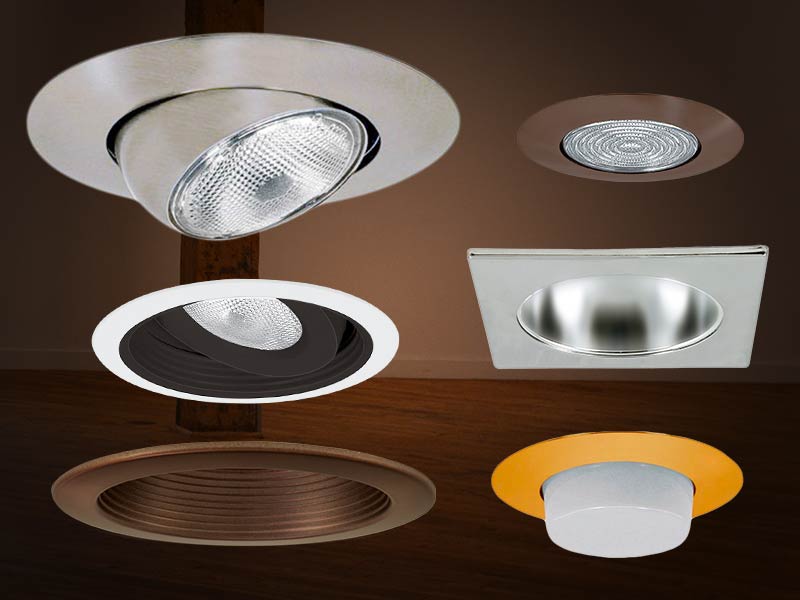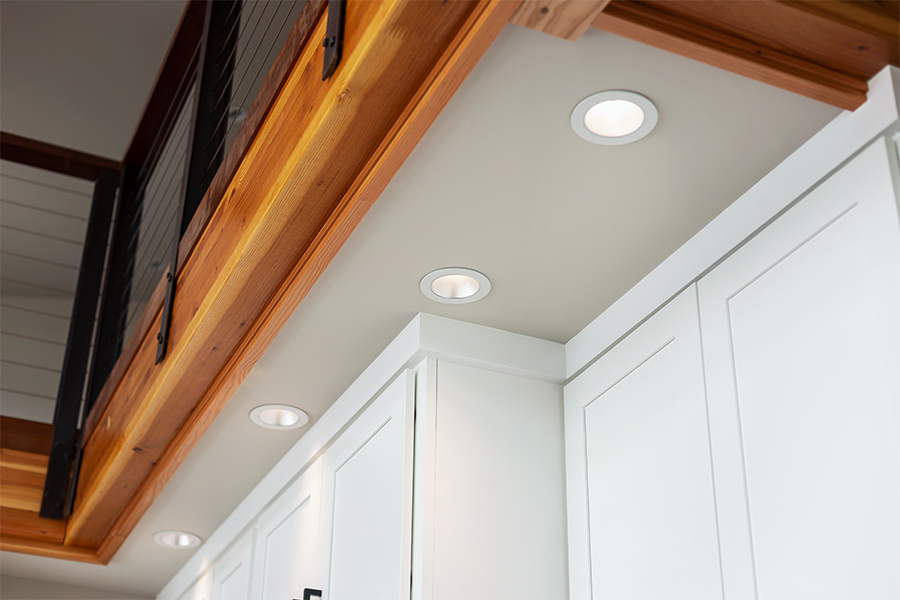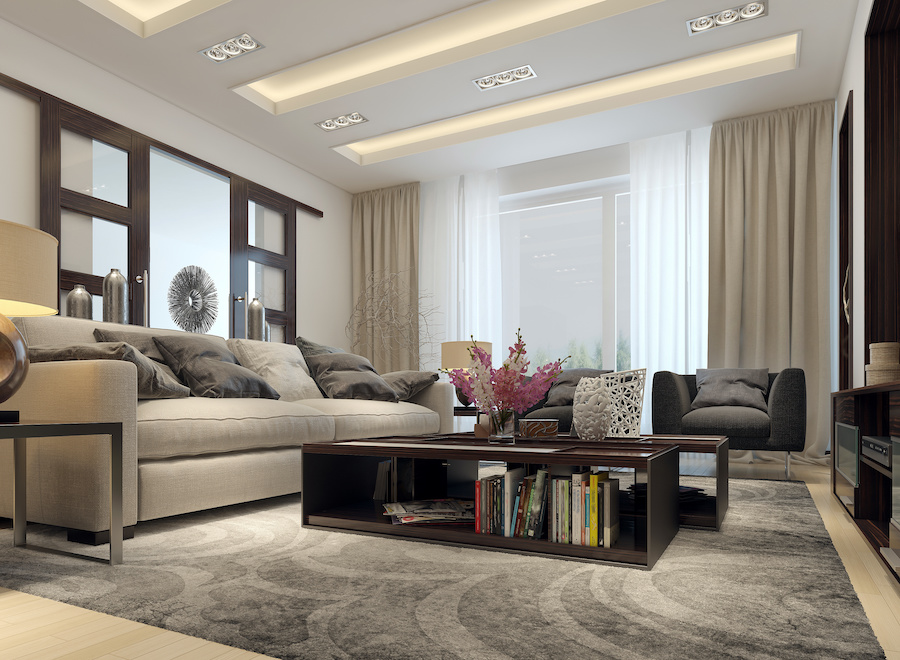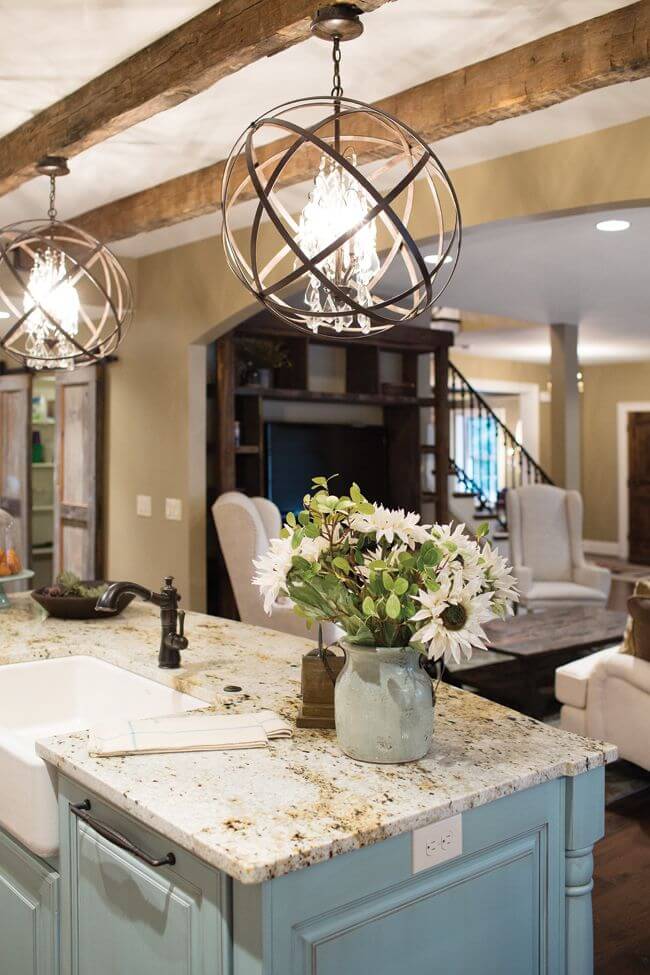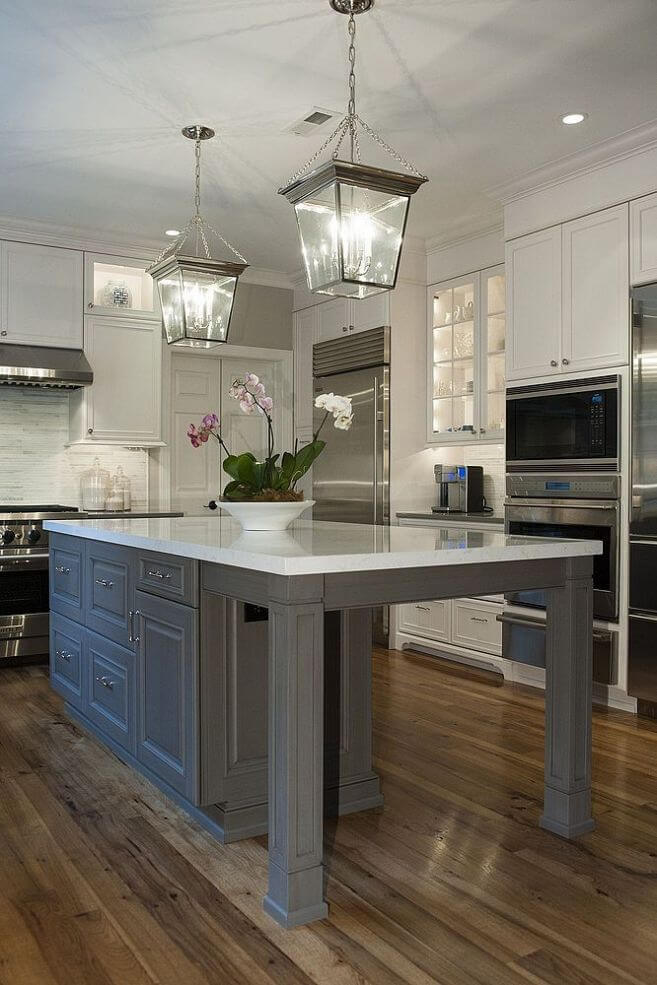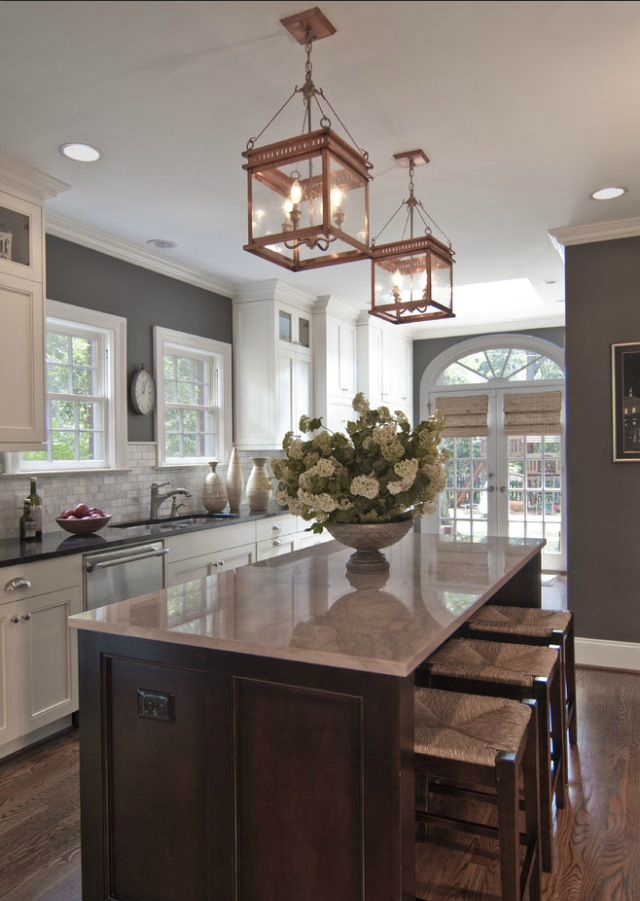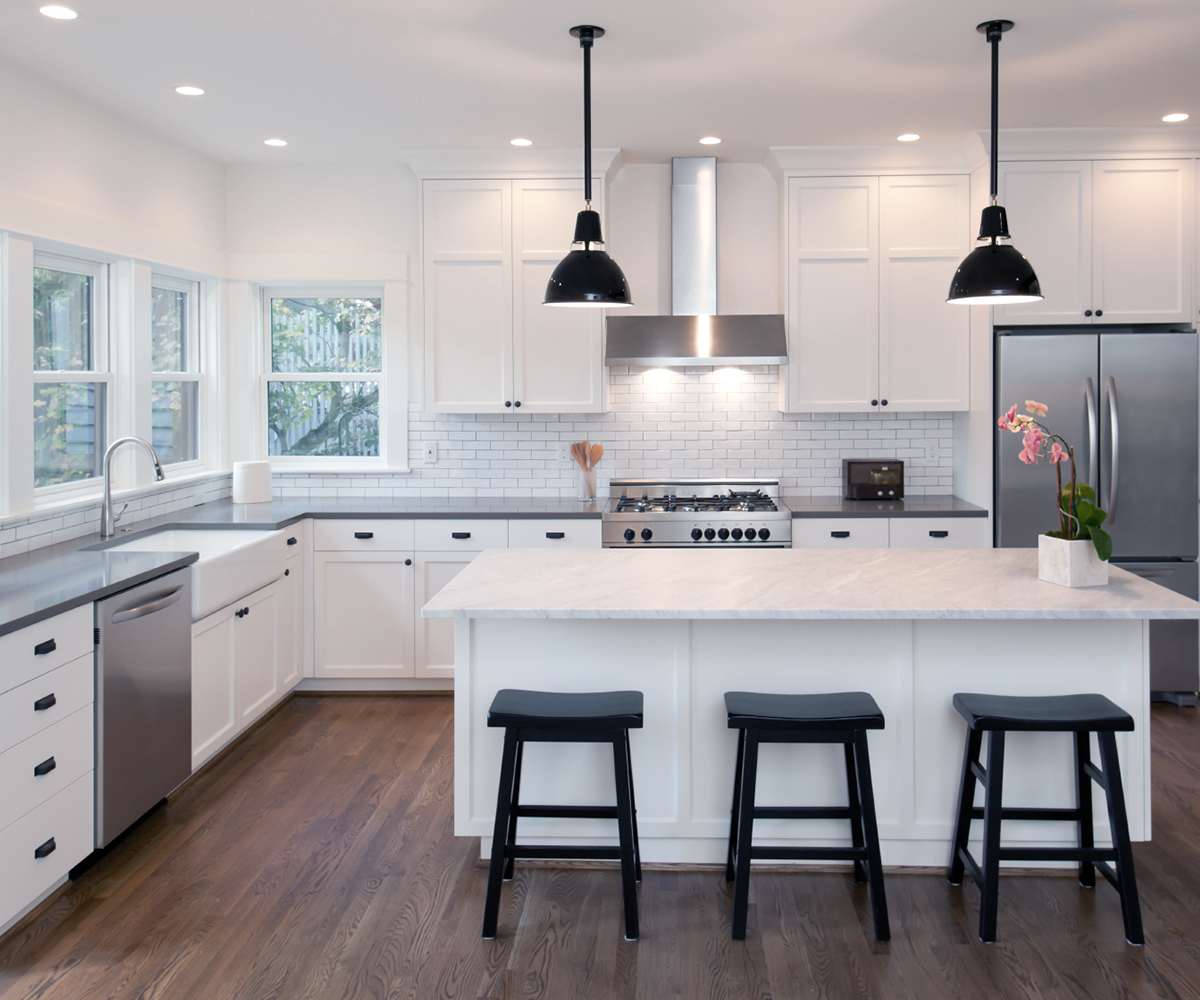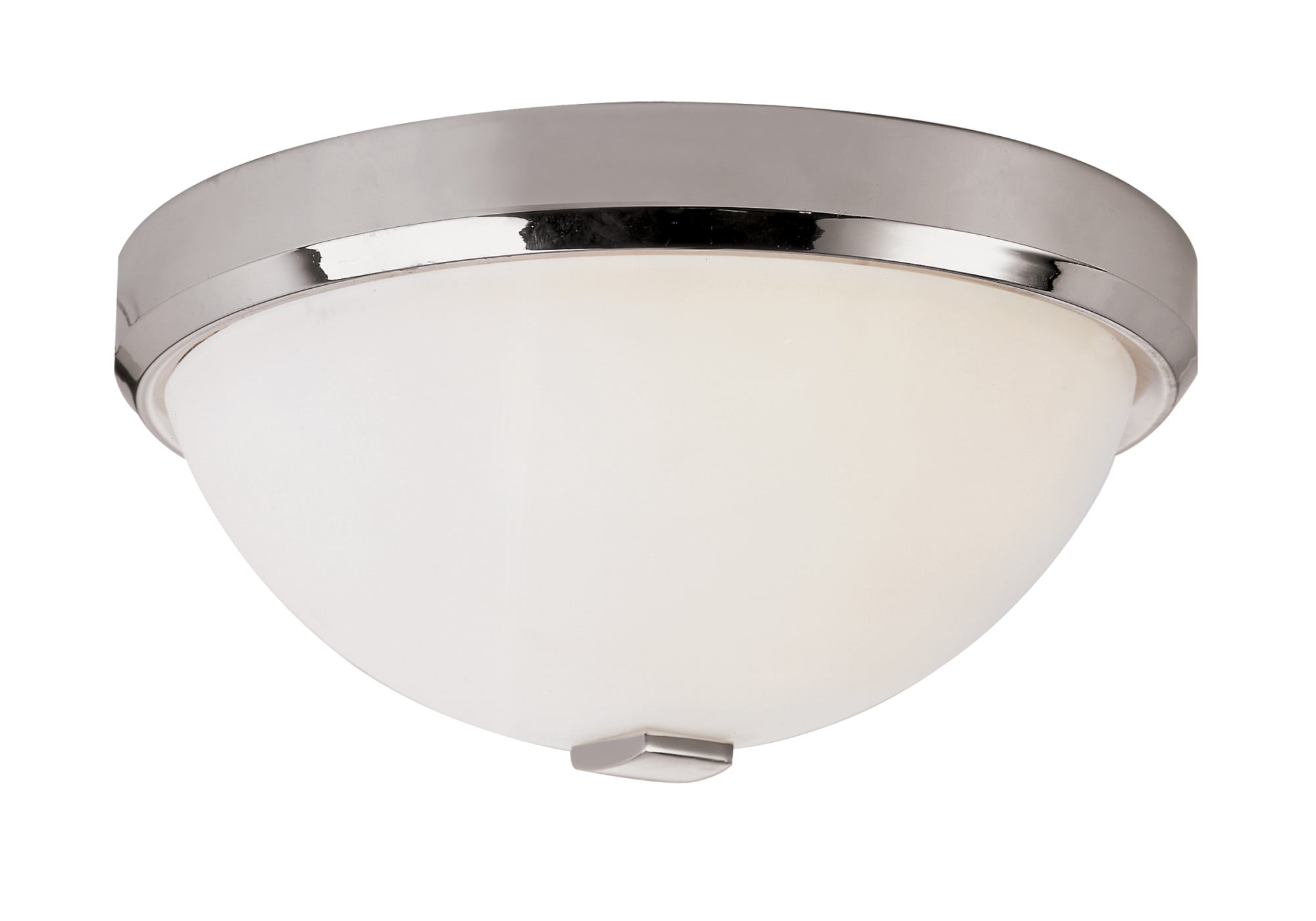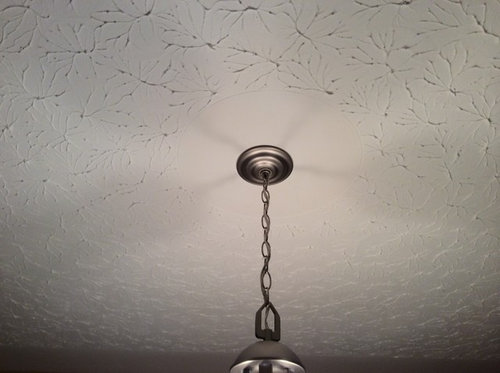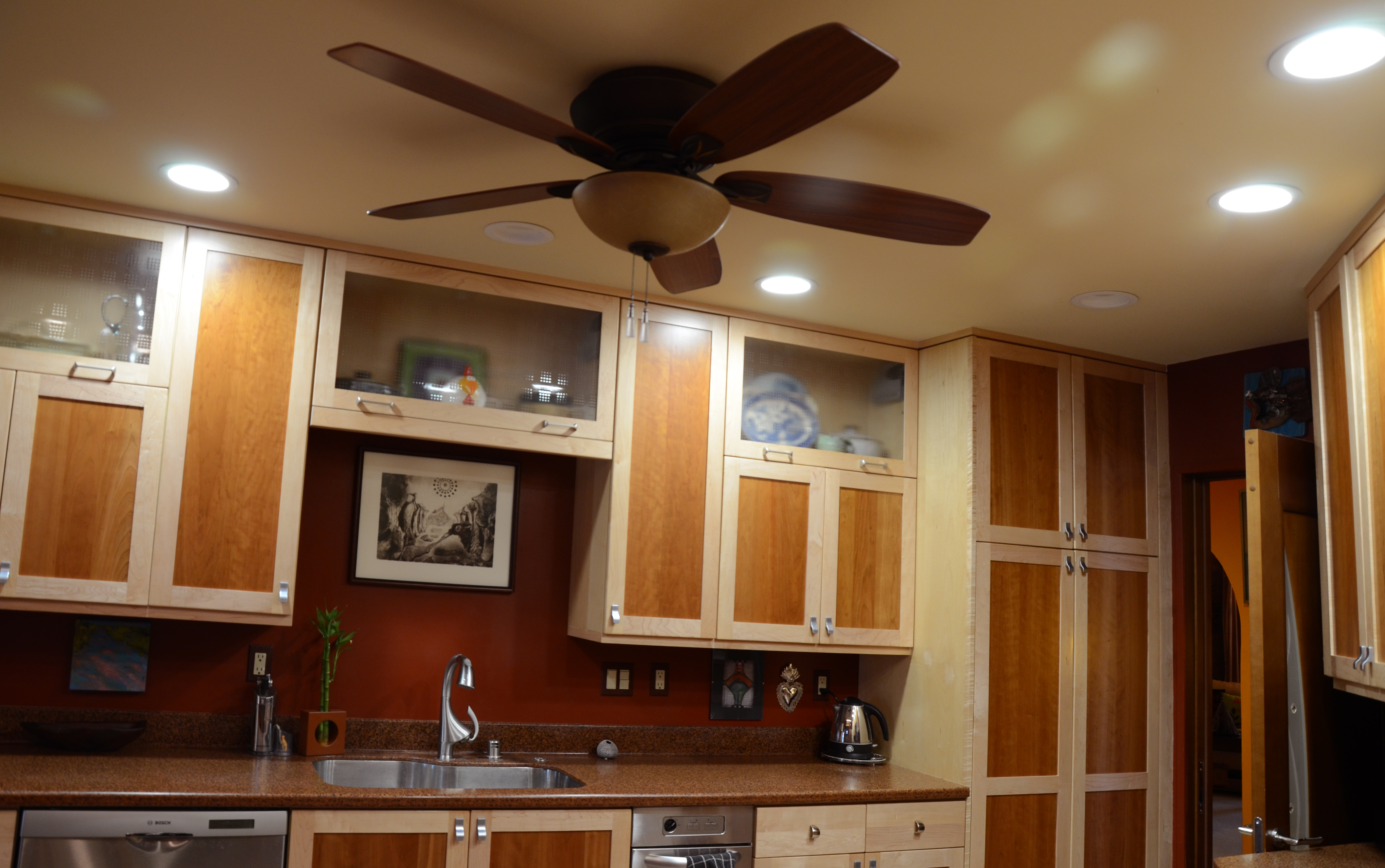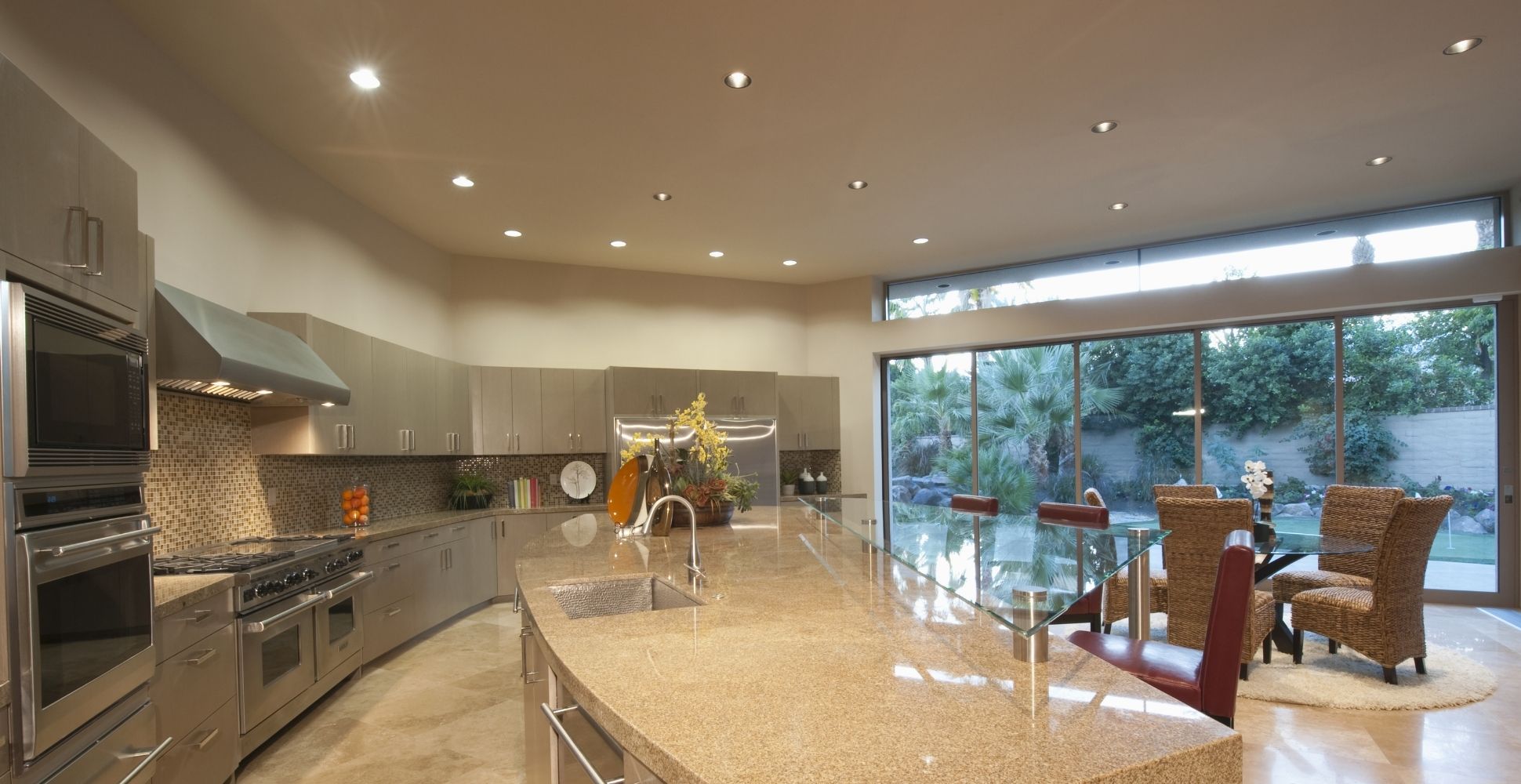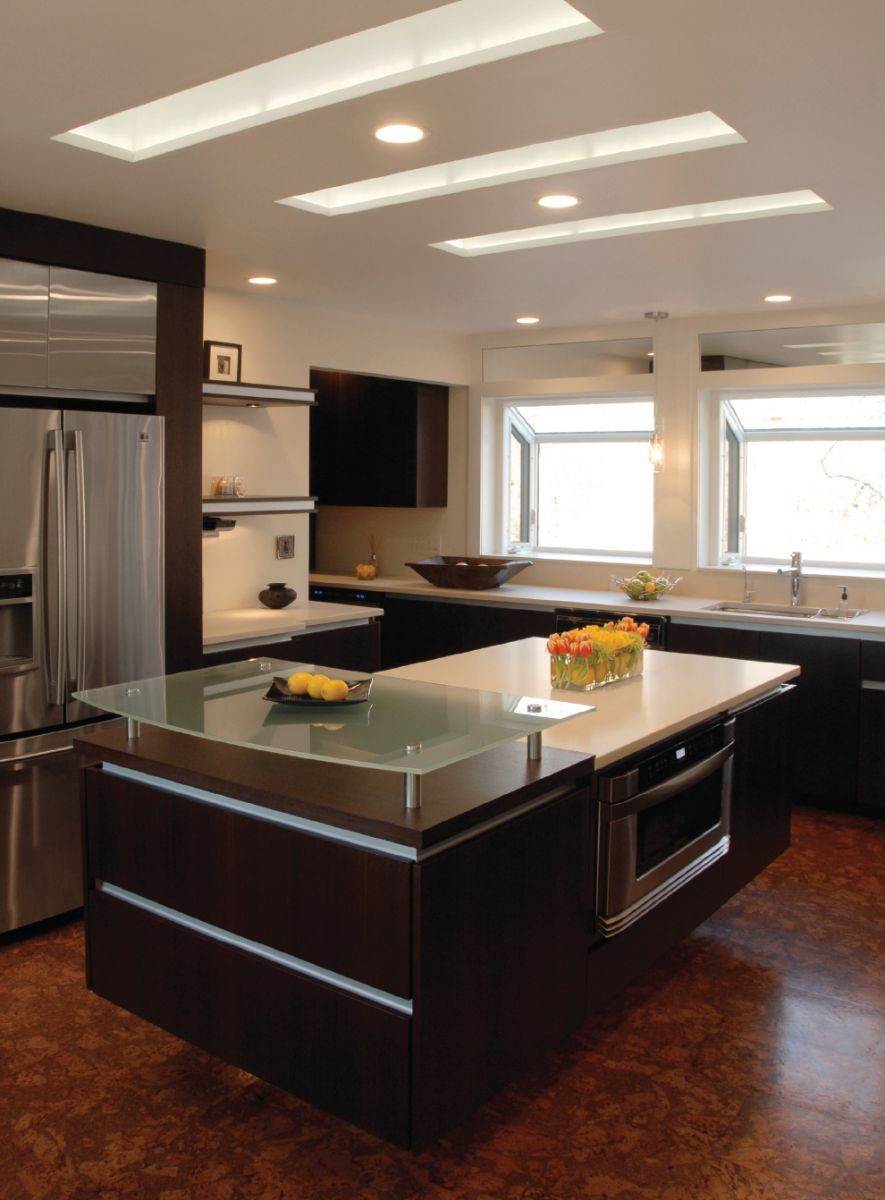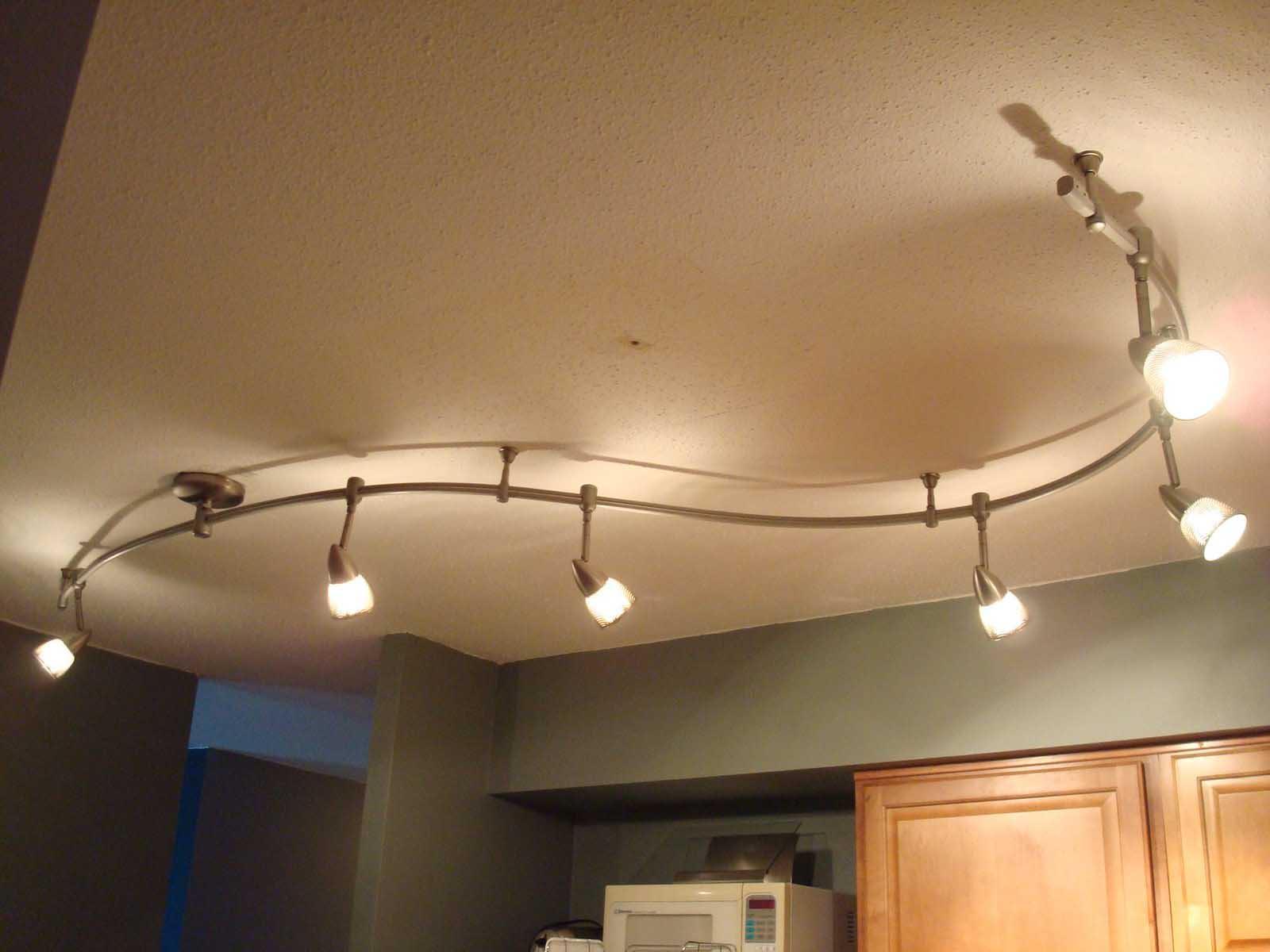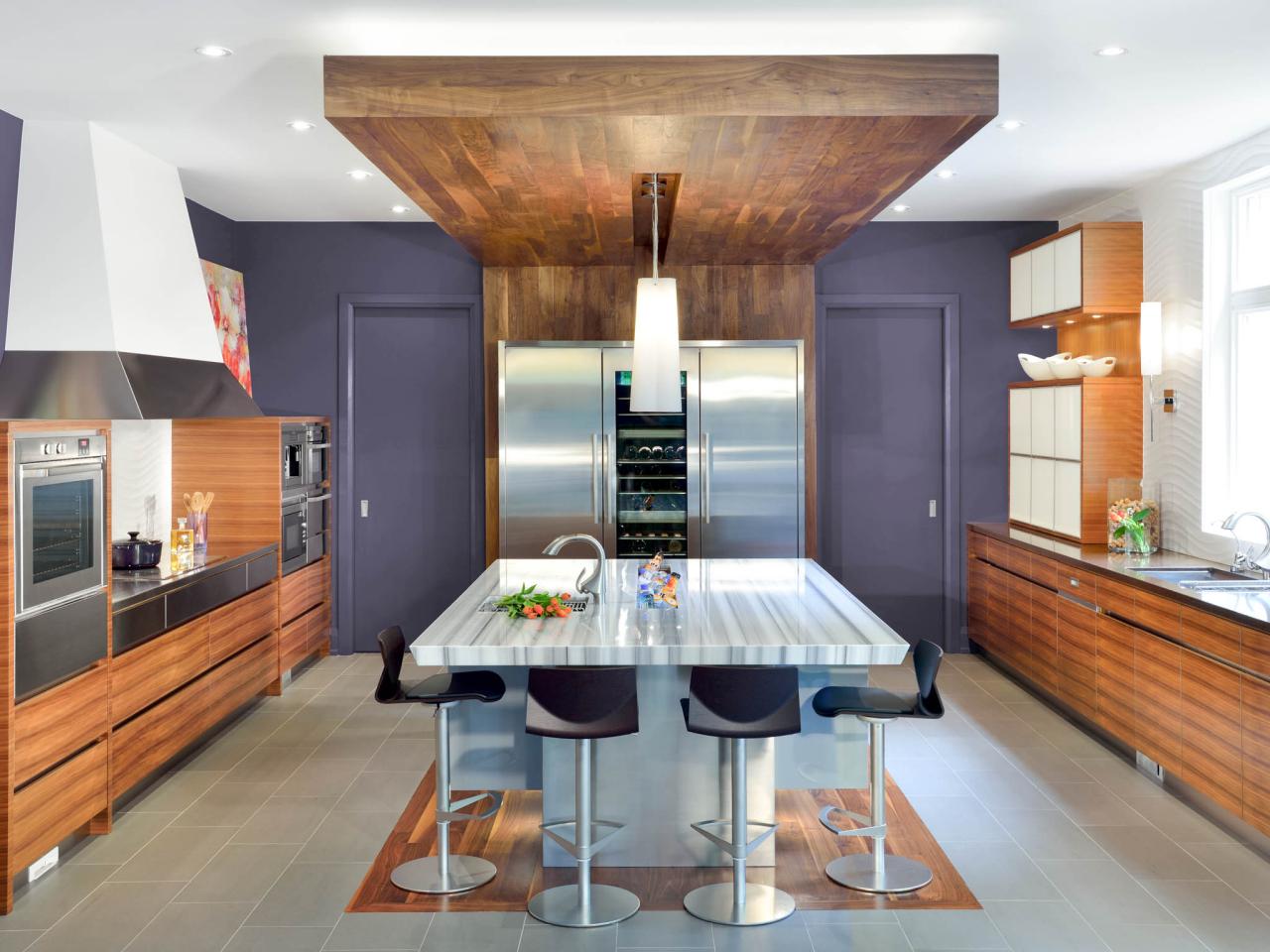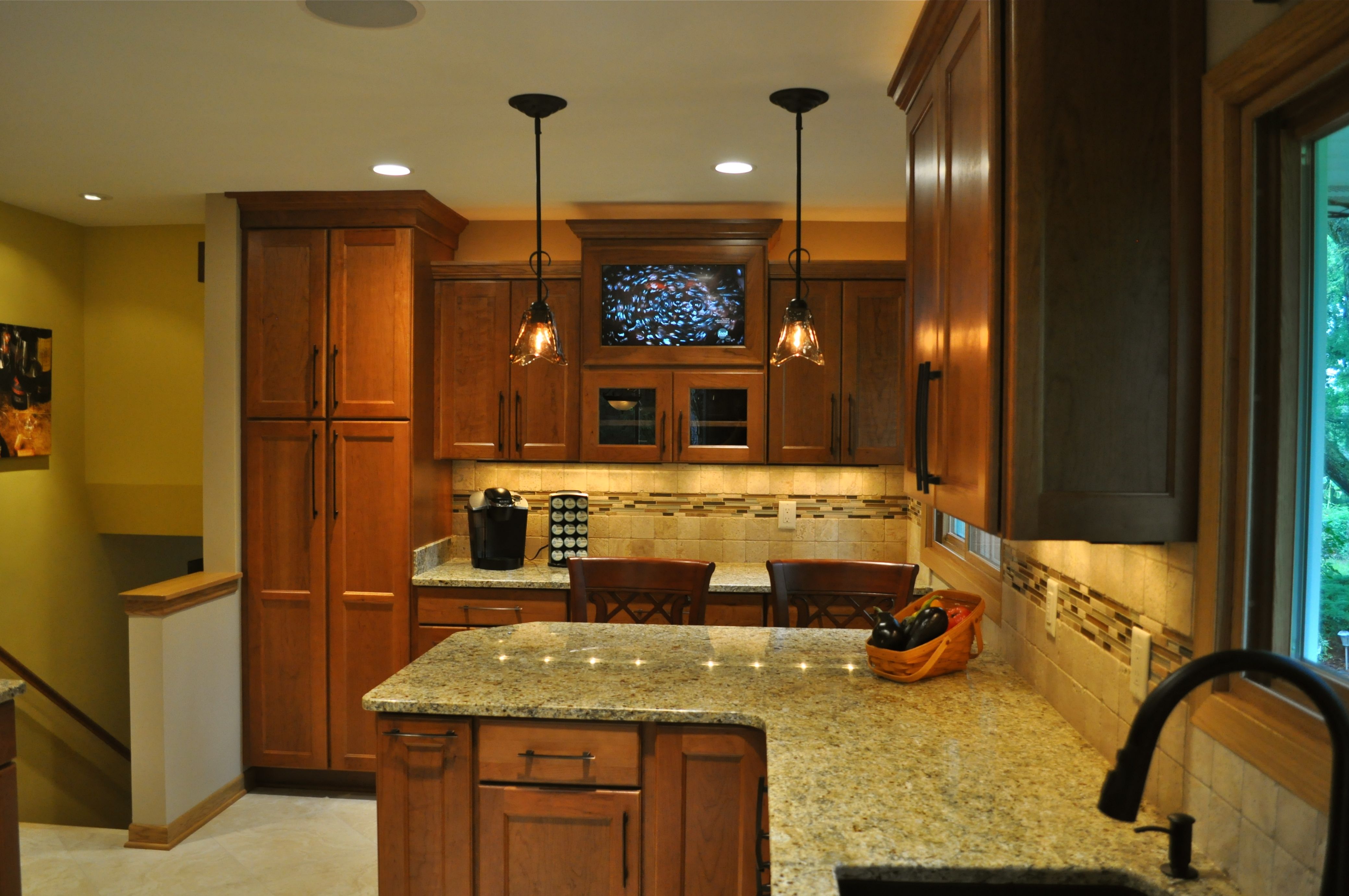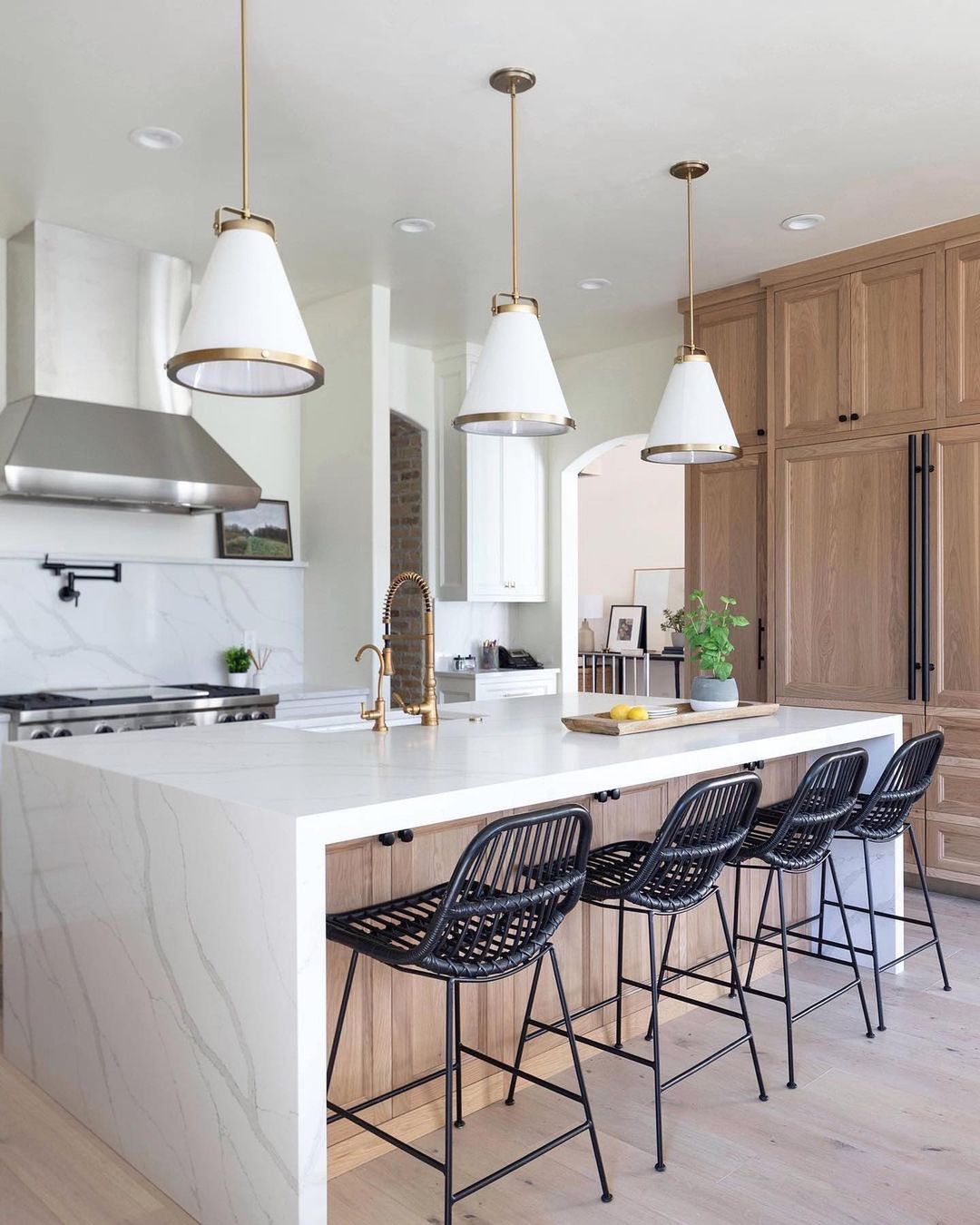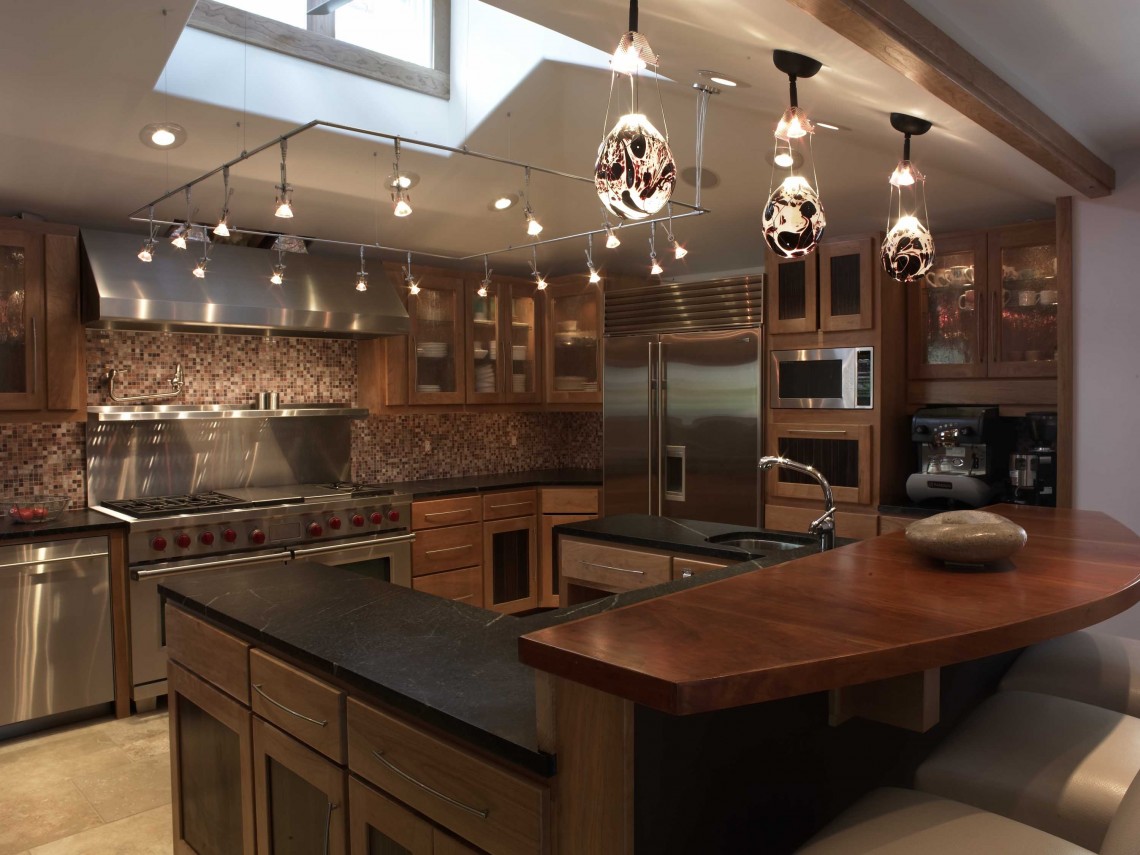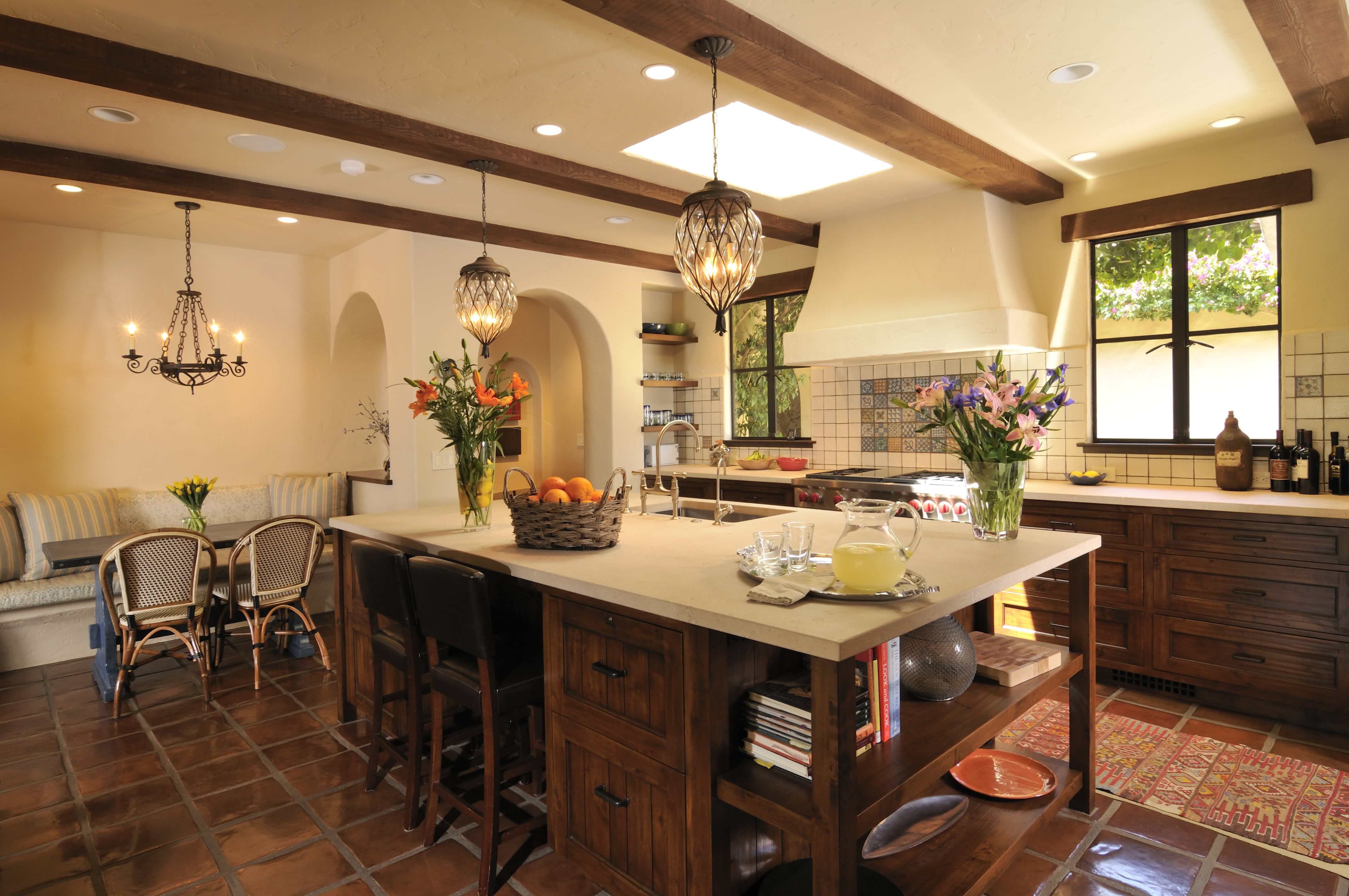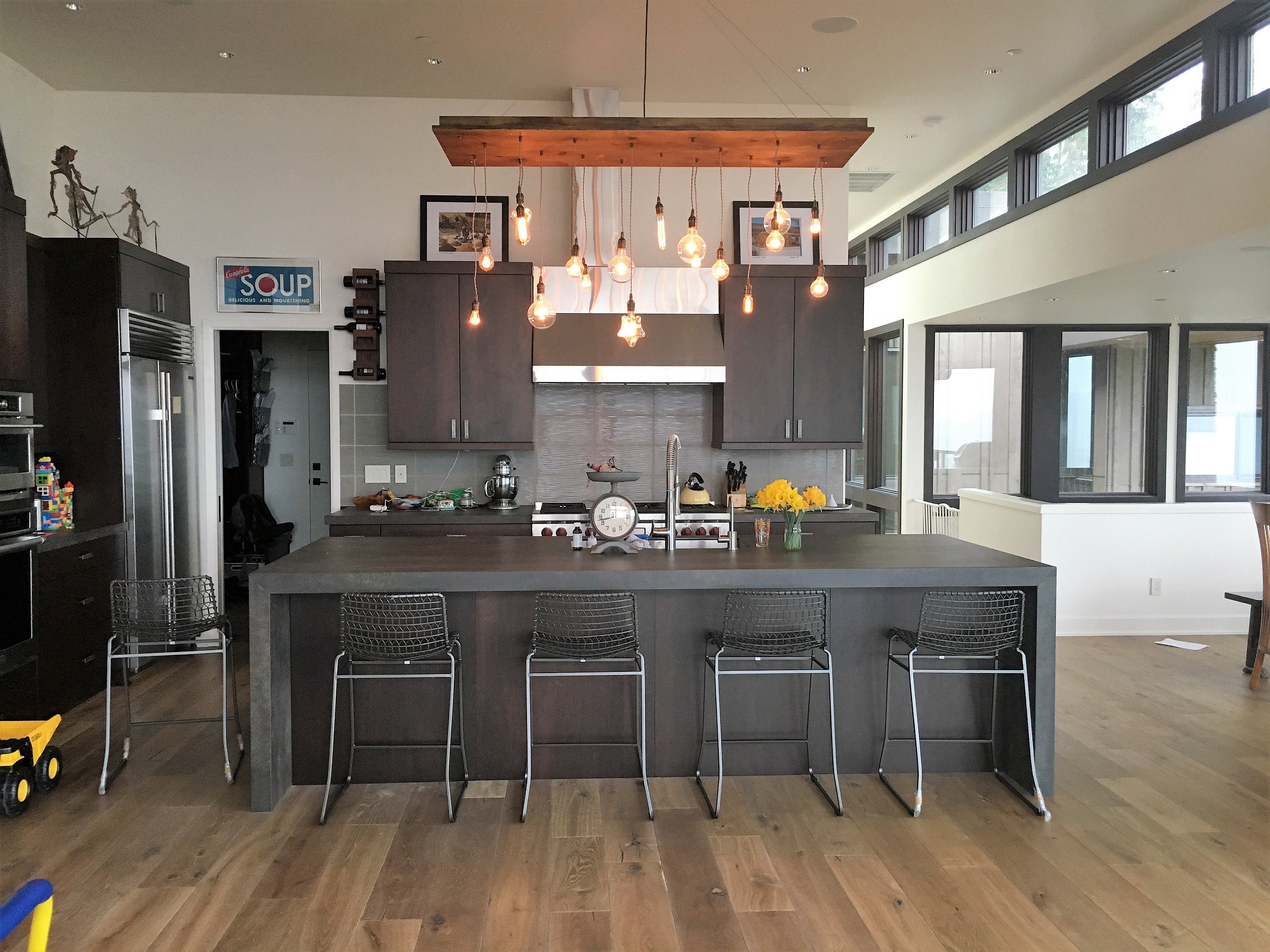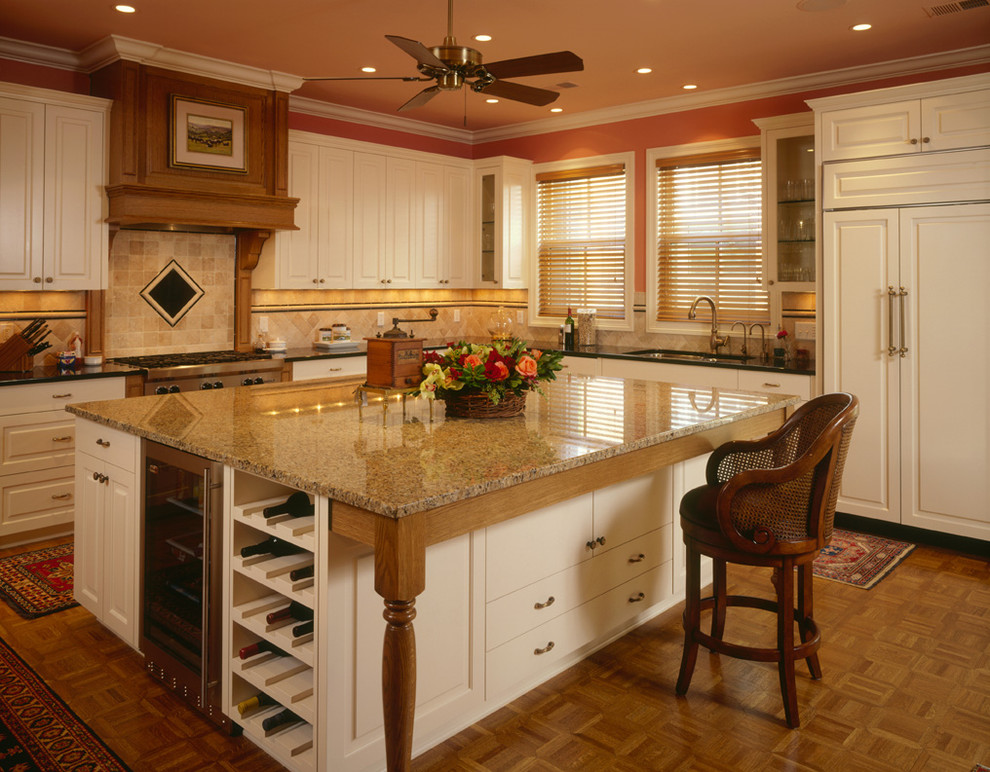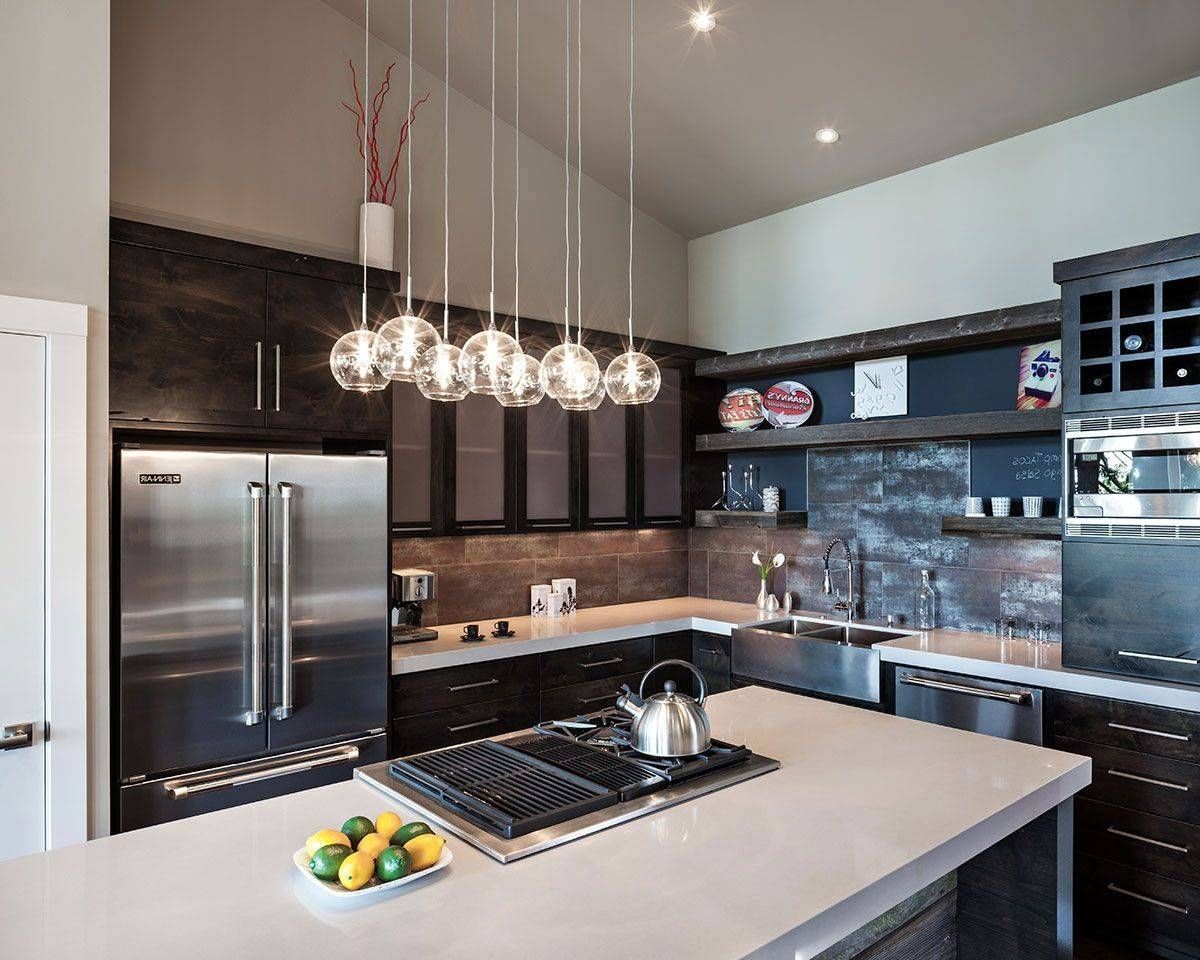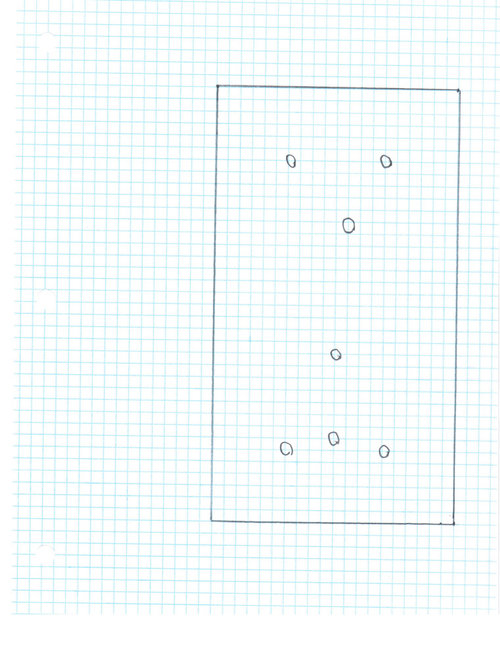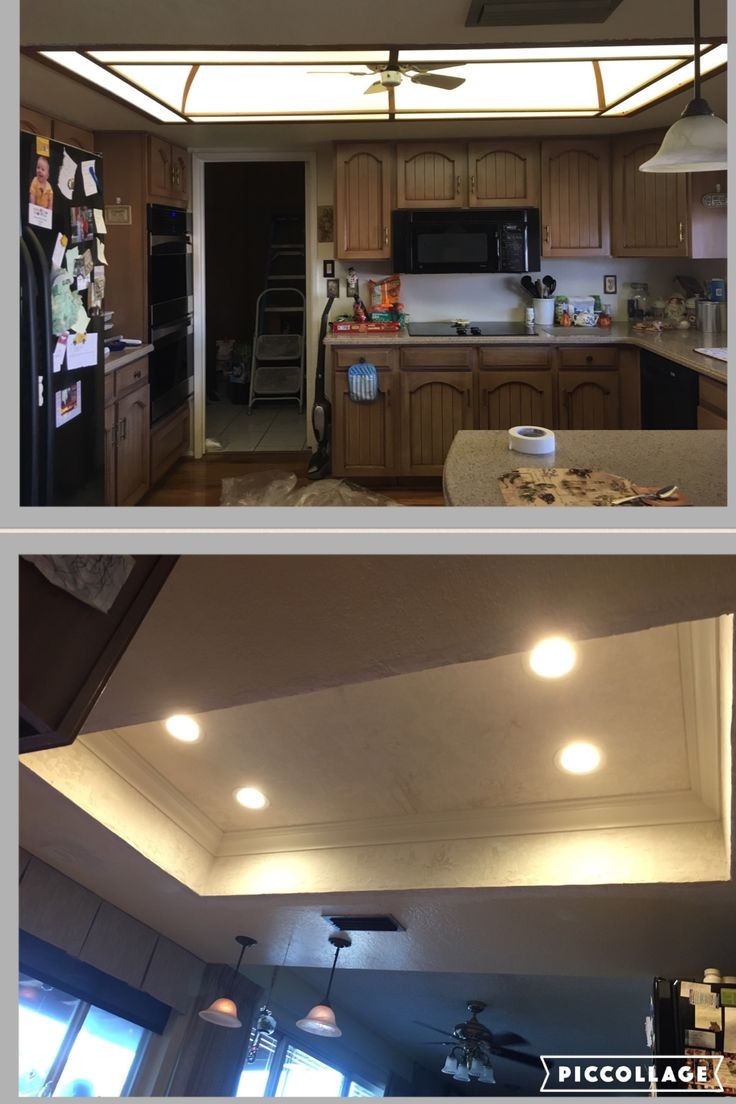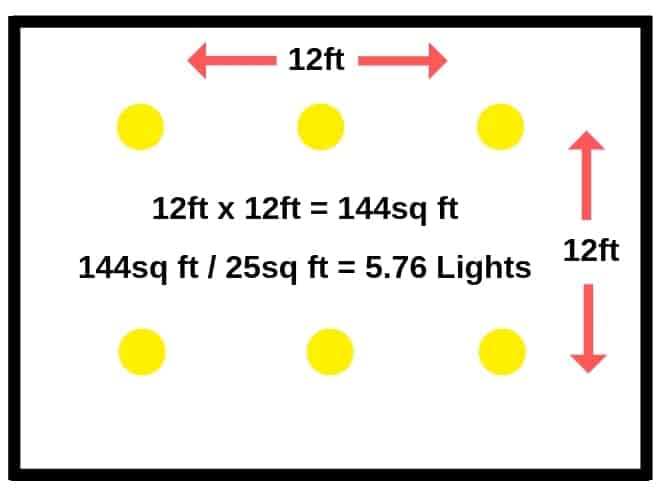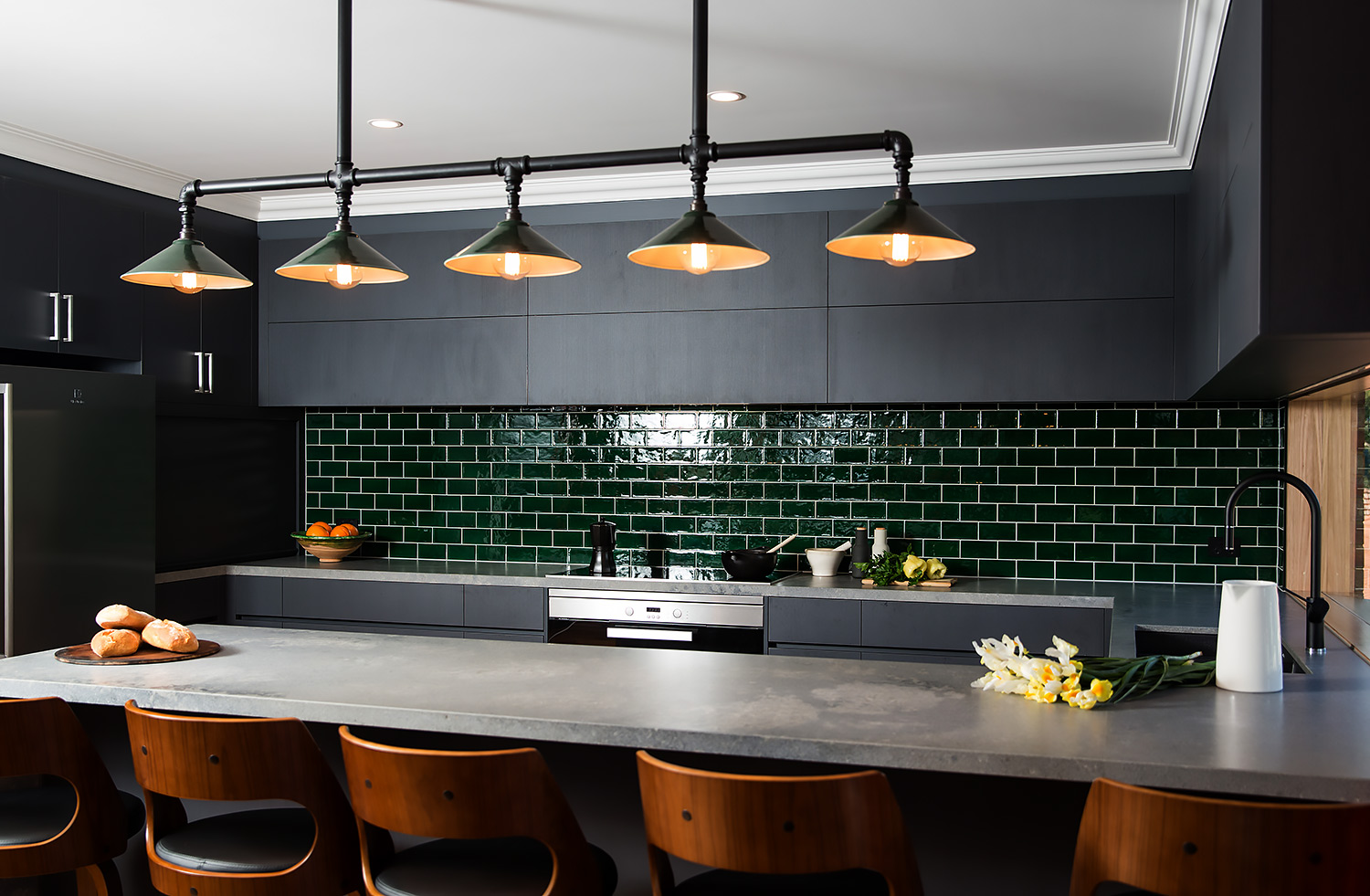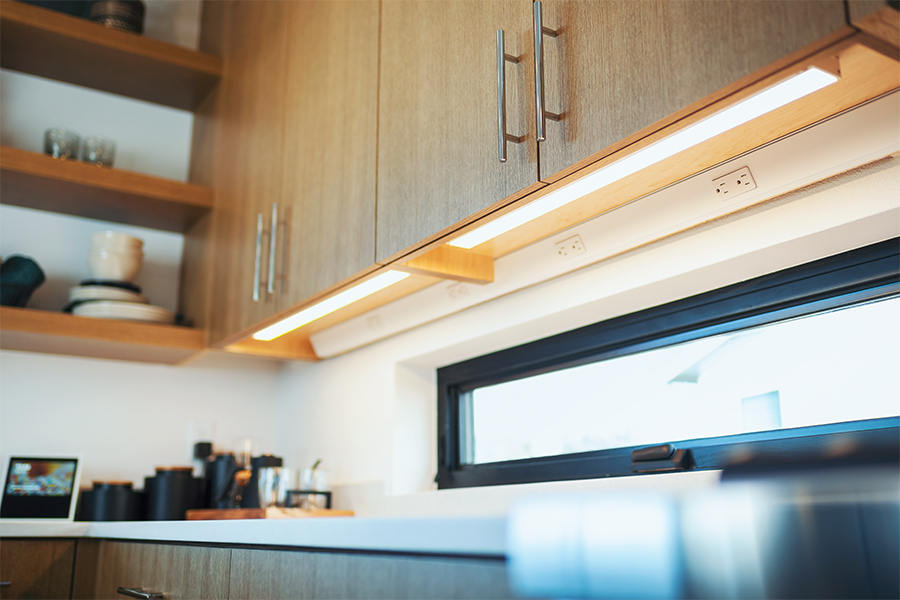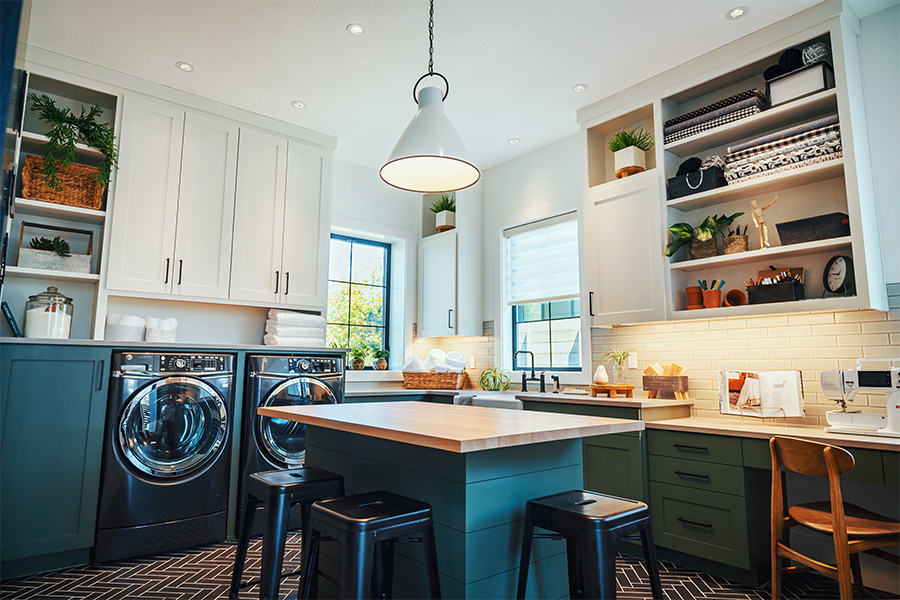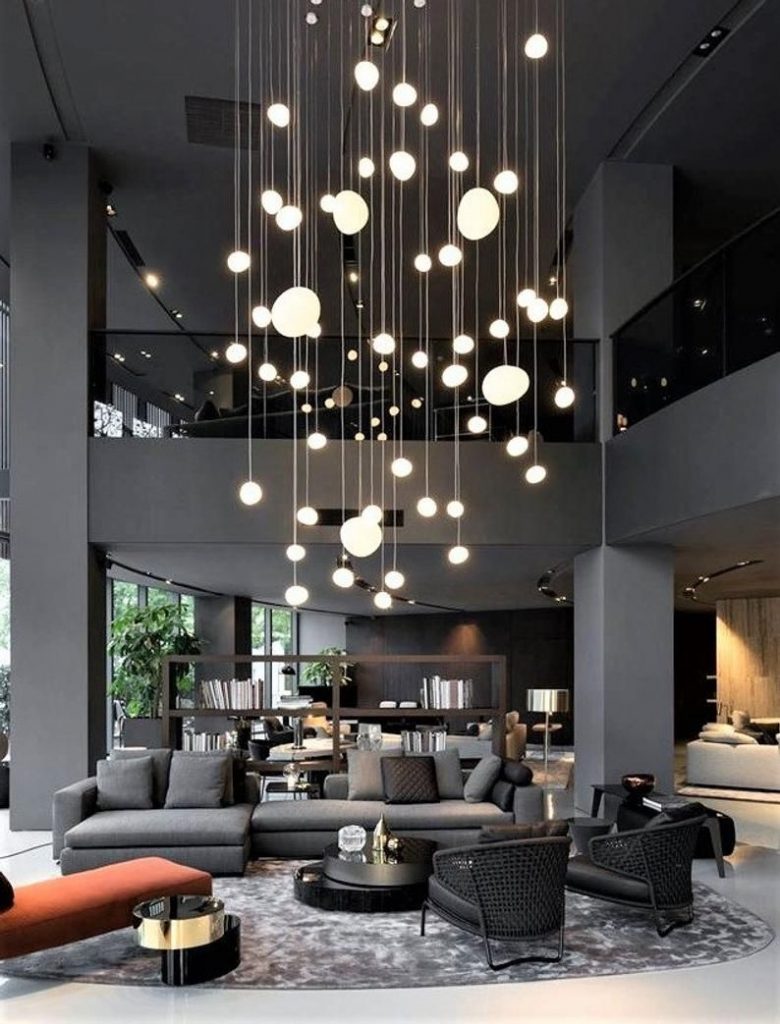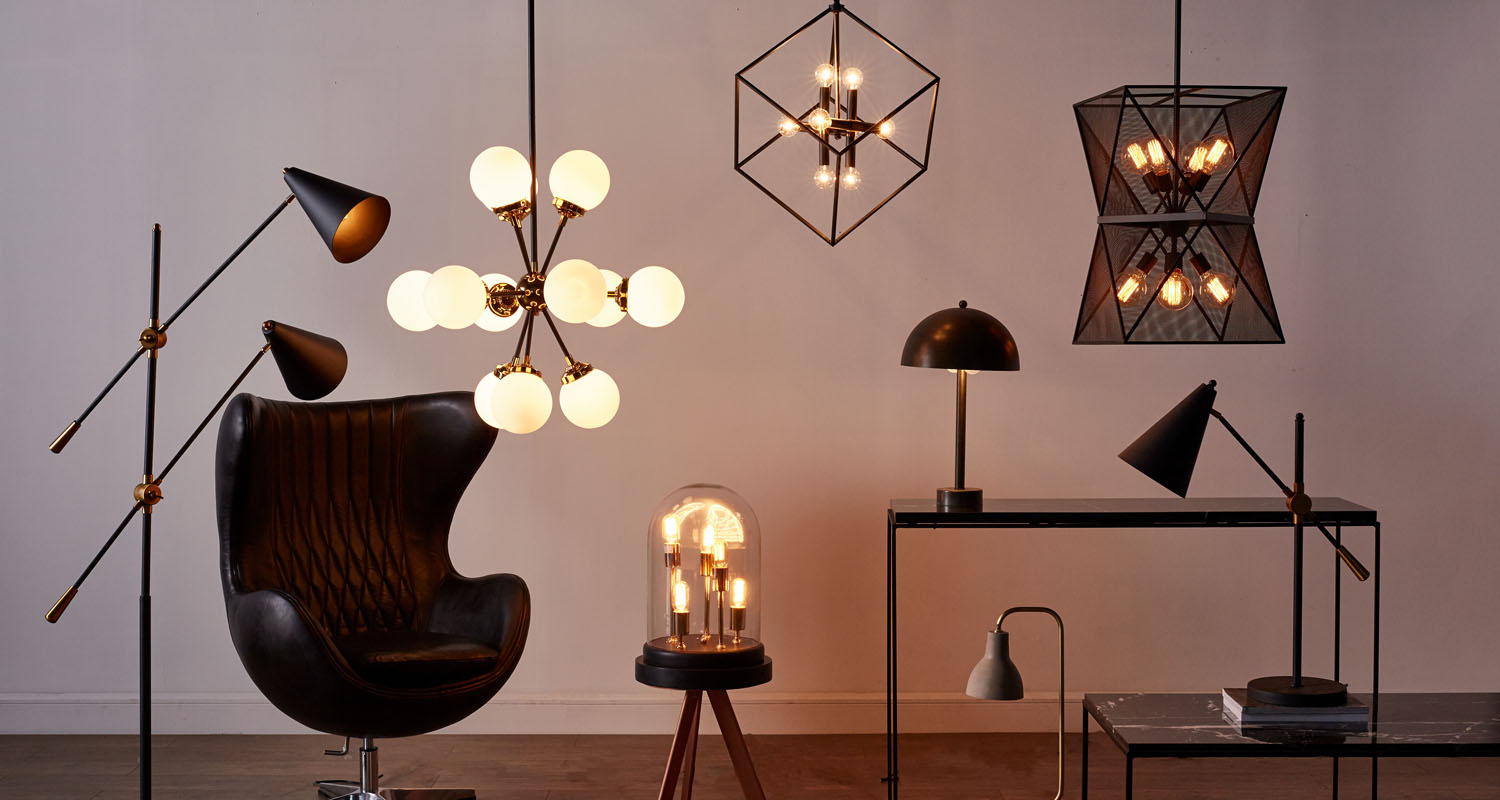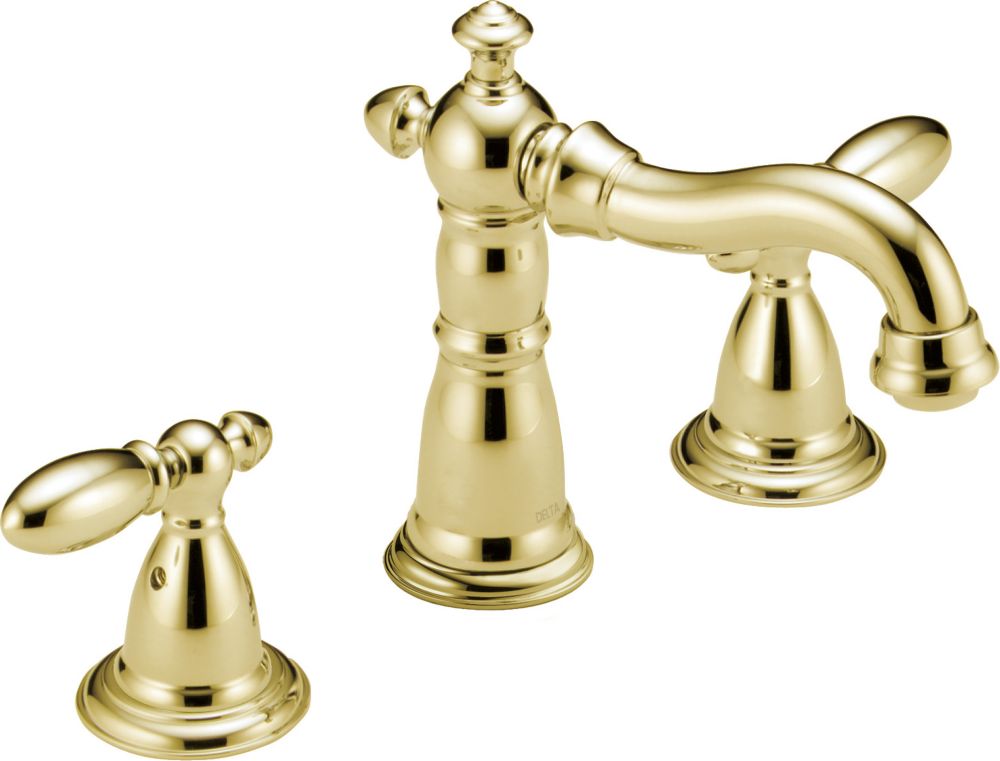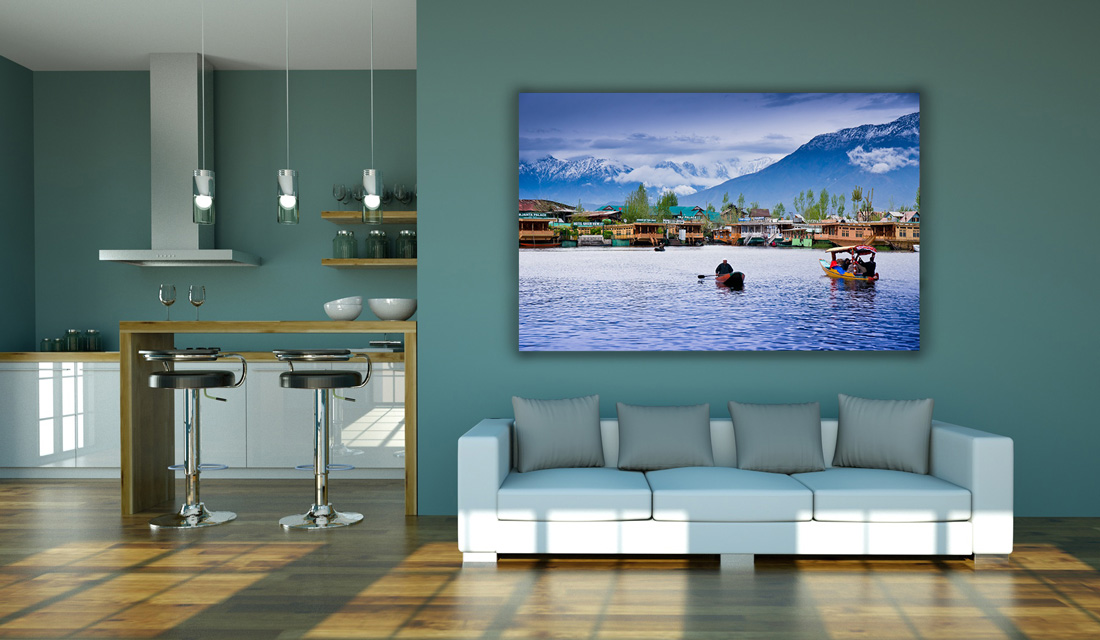When it comes to kitchen lighting, the options can be overwhelming. From pendant lights to track lighting, there are many different types of fixtures to choose from. However, two popular choices for kitchen lighting are center lights and recessed lighting. Let's take a closer look at these two options and their benefits for your kitchen.Center Light or Recessed Lighting Kitchen
Recessed lighting, also known as can lights or downlights, is a type of lighting that is installed into the ceiling. These lights are typically round or square and are designed to blend in with the ceiling, giving a clean and sleek look to the room. Recessed lighting is a popular choice for kitchens because it provides overall ambient lighting without taking up any visual space, making the room appear larger. One benefit of recessed lighting is its versatility. These lights can be placed in any part of the ceiling and can be angled to highlight specific areas, such as countertops or a center island. They can also be dimmable, allowing you to adjust the brightness of the room to fit your needs. Additionally, recessed lighting is a great choice for kitchens with low ceilings, as they do not hang down and take up valuable headspace. If you are considering recessed lighting for your kitchen, it is important to think about placement. Generally, these lights should be placed 4-6 feet apart and 12-18 inches away from the walls to provide even lighting. However, the placement can vary depending on the size and layout of your kitchen. It is best to consult with a professional electrician to determine the best placement for your specific space.Recessed Lighting
Kitchen lighting plays a crucial role in the overall design and functionality of the space. It not only provides necessary illumination for cooking and food preparation, but it also sets the mood for the room. Choosing the right lighting for your kitchen can enhance the look and feel of the space, making it more inviting and functional. When it comes to center light fixtures, they are a popular choice for kitchens because they provide a focal point and add a touch of style to the room. A center light fixture can come in many forms, such as a chandelier, pendant light, or flush mount. It is important to consider the style and design of your kitchen when choosing a center light fixture. For example, a modern kitchen may benefit from a sleek and minimal pendant light, while a traditional kitchen may look better with a more ornate chandelier.Kitchen Lighting
A center light fixture can be a great addition to your kitchen's design. It not only provides light but also adds a decorative element to the room. The key is to choose a fixture that complements the style and design of your kitchen. For example, if you have a large center island, a statement pendant light can draw attention to this feature. Or, if you have a small kitchen, a flush mount light can provide ample lighting without taking up too much visual space. Another benefit of a center light fixture is that it can act as a focal point in the room. It can tie together the different design elements in your kitchen, such as the countertops, cabinets, and flooring. Additionally, a center light fixture can add dimension and depth to the room, making it feel more dynamic and inviting.Center Light Fixture
As mentioned earlier, recessed lighting is a popular choice for kitchens. It is a versatile option that can provide overall ambient lighting or be used to highlight specific areas of the room. In terms of design, recessed kitchen lights can be a more subtle and minimal option compared to a center light fixture. They blend in with the ceiling and do not draw too much attention, allowing other design elements to shine. However, recessed kitchen lights can also add a modern and sleek touch to the room. They can be installed in a straight line above the countertops or angled to highlight certain features, such as a backsplash. They can also be used to create a layered lighting effect, with different recessed lights providing different levels of illumination throughout the room.Recessed Kitchen Lights
The ceiling is often an overlooked area when it comes to kitchen lighting. However, incorporating lights into the ceiling can add a unique and functional element to the room. In addition to recessed lights and center light fixtures, there are other types of ceiling lights that can work well in a kitchen. One example is track lighting, which consists of multiple lights attached to a track that can be adjusted and angled to provide light in different areas. This is a great option for kitchens with high ceilings or for highlighting specific areas, such as a dining table or a reading nook. Another option is a skylight, which can bring in natural light and create an open and airy feel in the room.Kitchen Ceiling Lights
For those with a center island in their kitchen, lighting is an important consideration. A center island is a great spot for food preparation, dining, or socializing, and having the right lighting can enhance these activities. As mentioned earlier, a statement pendant light can be a great choice for drawing attention to the center island. Alternatively, recessed lights can be placed above the island to provide task lighting for cooking and food preparation. Another option for center island lighting is to install under cabinet lights. These lights are placed underneath the cabinets and provide a soft glow on the countertops, making it easier to see while preparing food. They can also add a warm and cozy ambiance to the room.Center Island Lighting
Proper placement of recessed lights is crucial to their effectiveness and overall design of your kitchen. As mentioned earlier, they should be placed 4-6 feet apart and 12-18 inches away from the walls. However, the placement can vary depending on the size and layout of your kitchen. A professional electrician can help you determine the best placement for your specific space. When it comes to recessed light placement, it is also important to consider the different layers of lighting in your kitchen. For example, you may want to have a separate set of recessed lights for general ambient lighting and for task lighting in specific areas, such as above the stove or sink. This will ensure that your kitchen is well-lit and functional.Recessed Light Placement
In addition to overall ambient lighting, it is important to have task lighting in your kitchen. This type of lighting is focused on specific areas where you need more light for tasks such as cooking, cleaning, or reading recipes. As mentioned, recessed lights can be used for task lighting, but there are also other options, such as under cabinet lighting, as mentioned earlier. Another option for task lighting in the kitchen is a pendant light. These lights can be hung above a specific area, such as the sink or the stove, to provide focused light for tasks. They can also add a decorative touch to the room while being functional.Kitchen Task Lighting
The design of your center light fixture is an important consideration. As mentioned earlier, it should complement the style and design of your kitchen. However, there are also other factors to consider, such as the size and height of the fixture. You want to make sure that the light is not too big or too small for the space and that it is hung at the appropriate height. When it comes to recessed lighting, the design may not be as prominent, but it is still important to consider the size and placement of the lights. Additionally, the type of bulb used in recessed lights can also affect the overall design and ambiance of the room. For example, warm white bulbs can create a cozy and inviting atmosphere, while cool white bulbs can add a modern and sleek touch.Center Light Design
The Benefits of Center Light and Recessed Lighting in Your Kitchen Design

Creating the Perfect Kitchen Design
 When it comes to designing your dream kitchen, lighting plays a crucial role. Not only does proper lighting enhance the overall aesthetic of your kitchen, but it also serves a practical purpose for daily tasks such as cooking, cleaning, and entertaining. One of the most popular lighting options for kitchens is
center light or recessed lighting
. Let's explore the benefits of incorporating these two types of lighting in your kitchen design.
When it comes to designing your dream kitchen, lighting plays a crucial role. Not only does proper lighting enhance the overall aesthetic of your kitchen, but it also serves a practical purpose for daily tasks such as cooking, cleaning, and entertaining. One of the most popular lighting options for kitchens is
center light or recessed lighting
. Let's explore the benefits of incorporating these two types of lighting in your kitchen design.
The Versatility of Center Light
 Center light, also known as ambient lighting, provides overall illumination for a room. It is typically installed in the center of the ceiling and can be in the form of a chandelier, pendant light, or flush mount. One of the main advantages of center light is its versatility. It can be used to set the mood for different occasions, from bright and energetic for cooking to soft and dim for a cozy dinner party. By
combining
different types of center light fixtures, you can create a layered and dynamic lighting design for your kitchen.
Center light, also known as ambient lighting, provides overall illumination for a room. It is typically installed in the center of the ceiling and can be in the form of a chandelier, pendant light, or flush mount. One of the main advantages of center light is its versatility. It can be used to set the mood for different occasions, from bright and energetic for cooking to soft and dim for a cozy dinner party. By
combining
different types of center light fixtures, you can create a layered and dynamic lighting design for your kitchen.
The Sleek and Modern Look of Recessed Lighting
 Recessed lighting, also known as can lights or downlights, are small light fixtures that are installed into the ceiling. They are a popular choice for kitchen lighting because they provide a sleek and modern look. Recessed lights are also extremely versatile as they can be directed to illuminate specific areas of your kitchen, such as countertops, backsplash, or cabinets. This type of lighting can also be
used in conjunction
with center light to provide both ambient and task lighting in your kitchen.
Recessed lighting, also known as can lights or downlights, are small light fixtures that are installed into the ceiling. They are a popular choice for kitchen lighting because they provide a sleek and modern look. Recessed lights are also extremely versatile as they can be directed to illuminate specific areas of your kitchen, such as countertops, backsplash, or cabinets. This type of lighting can also be
used in conjunction
with center light to provide both ambient and task lighting in your kitchen.
The Perfect Combination for a Well-Lit Kitchen
 When it comes to kitchen design, it's all about finding the perfect balance between functionality and style. By incorporating both center light and recessed lighting in your kitchen, you can achieve this balance. Center light provides overall illumination, while recessed lighting can be used to highlight specific areas and add depth to your kitchen design. Additionally, both types of lighting can be
controlled
with dimmers, allowing you to adjust the level of light according to your needs.
When it comes to kitchen design, it's all about finding the perfect balance between functionality and style. By incorporating both center light and recessed lighting in your kitchen, you can achieve this balance. Center light provides overall illumination, while recessed lighting can be used to highlight specific areas and add depth to your kitchen design. Additionally, both types of lighting can be
controlled
with dimmers, allowing you to adjust the level of light according to your needs.
In Conclusion
 Incorporating center light and recessed lighting in your kitchen design not only adds to the aesthetic appeal of your space but also serves a practical purpose. The versatility, sleekness, and functionality of these two types of lighting make them a popular choice among homeowners. So, if you're looking to create a well-lit and stylish kitchen, consider incorporating center light and recessed lighting into your design.
Incorporating center light and recessed lighting in your kitchen design not only adds to the aesthetic appeal of your space but also serves a practical purpose. The versatility, sleekness, and functionality of these two types of lighting make them a popular choice among homeowners. So, if you're looking to create a well-lit and stylish kitchen, consider incorporating center light and recessed lighting into your design.











